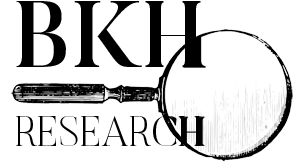A common lament amongst experienced genealogists is that the Internet enables dabblers in family history research to add generations of ancestors “just by clicking on the leaf,” many times without any or even partially realistic attribution. This is true. The Internet also allows searching with wild cards, searching for phrases in gigantic libraries and my favorite preview pages of books that may not necessarily apply to the problem at hand. Site after site are adding digitized copies of original documents that can be read and reviewed to make your own decisions about linkage. I love it!
At the same time, it is true, linked genealogies with no attribution, wrong attribution, or poor conclusions are the bane of all genealogists, because when they are wrong they add confusion and when they are right you don’t know it. However, lineages have been misappropriated for hundreds of years, prior the Internet and genealogies linked by leaves. In fact some of the earliest ancestors misappropriations are in societies like the SAR, DAR, Mayflower Descendents, etc., that now have much more serious Registrars than they did a hundred years ago. Those old poorly documented or wrongly attributed lines are still on the books.
There will always be problems when men or women with the same names lived in the same places around the same times. Even uncommon surnames when joined with popular first names cause genealogical melded personalities. In the 1930s, 1940s and 1950s, there were more than four men in the United States named Walter Henritze and more than six men named Thomas Henritze. In the 1810s there were two and possibly three men named James Cunningham in McMinn Co., Tennessee. In the 1830s, there were at least ten men named William King in the Holston Valley, many of whom were descendants of Edward King and Elizabeth (Nichols) King, a son, several grandsons and quite a few great grandsons, plus one completely separate unrelated line. The 1910s and 1920s found four men named William Bray in the corner where Oklahoma, Arkansas and Texas meet. It happens and yes sometimes they all marry women named Elizabeth or Mary or Sarah.
Recently I read an old DAR application for James Cunningham that mixed up a man who received a pension in 1830, 1835 and 1840 in McMinn Co., Tennessee with a man who died in 1820 in McMinn Co., Tennessee. The death dates alone disqualified them from being the same man. However when the application was completed, a cursory look found a man with the right name receiving a pension in the right county. Only reading the Chancery Court records proved the man with the children mentioned in the application was the man who died in 1820. It’s is likely that those Chancery Court records were not readily available when the applicant filed her original documents. Later her daughter and granddaughter also filed on that line. Nowdays, an applicant would need to supply more proof and that application would probably rule out the validity of three prior members. I can only imagine the Registrar’s work untangling that problem.
It is up to each researcher to check and double check the clues and hints given in linked genealogies to be certain it was even possible that the two same named people were the same person. If you just take the lines and links on faith, you will end up with tangled lines, melded persons and someone else’s ancestors.








